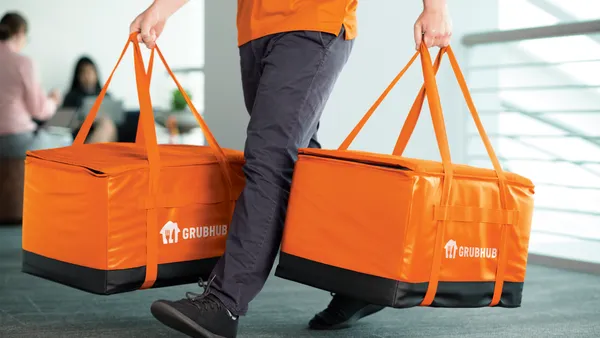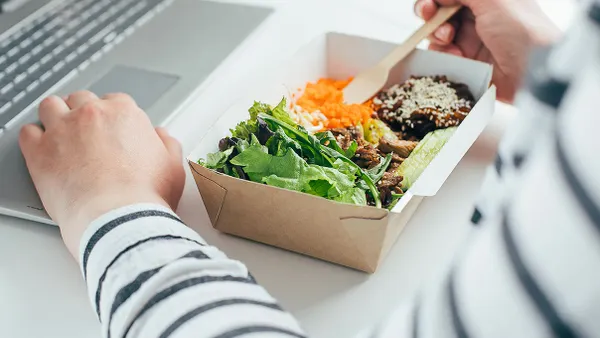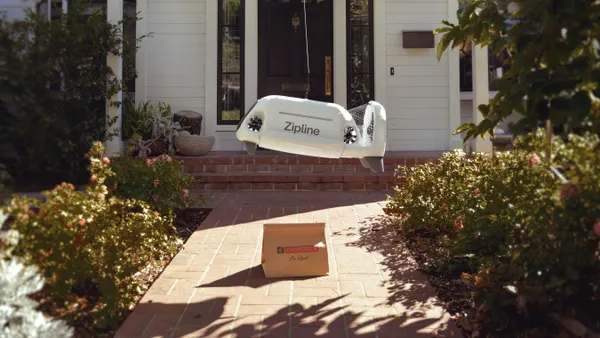Dive Brief:
- Uber and Avride have signed a partnership to deploy Avride’s delivery robots and autonomous vehicles in several cities, the autonomous vehicle startup said in a Thursday press release.
- To start, Uber Eats will deliver orders with Avride’s sidewalk robots in Austin, Texas, before expanding to Dallas and Jersey City, New Jersey. The partnership also includes robotaxis, though that aspect is not expected to debut until next year.
- Uber Eats has worked with a number of robotics firms to offer delivery without the use of workers. Last year, Uber and Serve Robotics announced they will eventually deploy about 2,000 delivery robots, and Uber is expanding with Coco in Los Angeles with the goal of entering other markets.
Dive Insight:
Consumers in markets covered by the Uber Eats and Avride partnership “may be presented with the option to have that trip fulfilled by an Avride delivery robot,” according to the release.
The startup says its robots are already in use for commercial delivery in several markets, in South Korea and parts of the United States. Avride will look to scale up its work with Uber Eats fairly rapidly, the company said.
“We plan to expand the total fleet of Avride robots operating within Uber Eats to hundreds in 2025,” Avride’s CEO Dmitry Polishchuk said in a statement.
The economic differences between robot delivery and delivery by workers are currently unknown, but Uber Eats may be under pressure to reduce its labor costs. The company does not directly break down how much it pays delivery workers, whom it considers to be independent contractors. But this compensation is included in, and is likely the bulk of, the cost of revenue.
Uber’s cost of revenue across all segments rose from $10.8 billion in the first six months of 2023 to $12.7 billion in the same period in 2024, according to its most recent 10-Q investor filing. That represents a proportional increase from 60% of total revenue to 61%.
Ongoing regulatory battles are likely to impact Uber’s labor costs. In June, a federal court found California law AB 5 — which classified many gig workers as employees rather than independent contractors — was constitutional. However, ballot measure Prop 22, which was backed by Uber and passed in 2020, was upheld by the California Supreme Court a month later. This measure allowed companies to continue listing drivers as independent contractors. A recent delivery minimum wage increase in New York City has pushed up driver earnings in that jurisdiction, as well.
Partnering with external robotics firms also allows Uber to defray some of the cost of research and development, rather than developing sidewalk robots internally. The company’s R&D expenses decreased 2%, or by $30 million, in the first half of 2024 over the same period last year. Deals that could constrain R&D costs while also eliminating trips made by workers could be beneficial to Uber long term.















